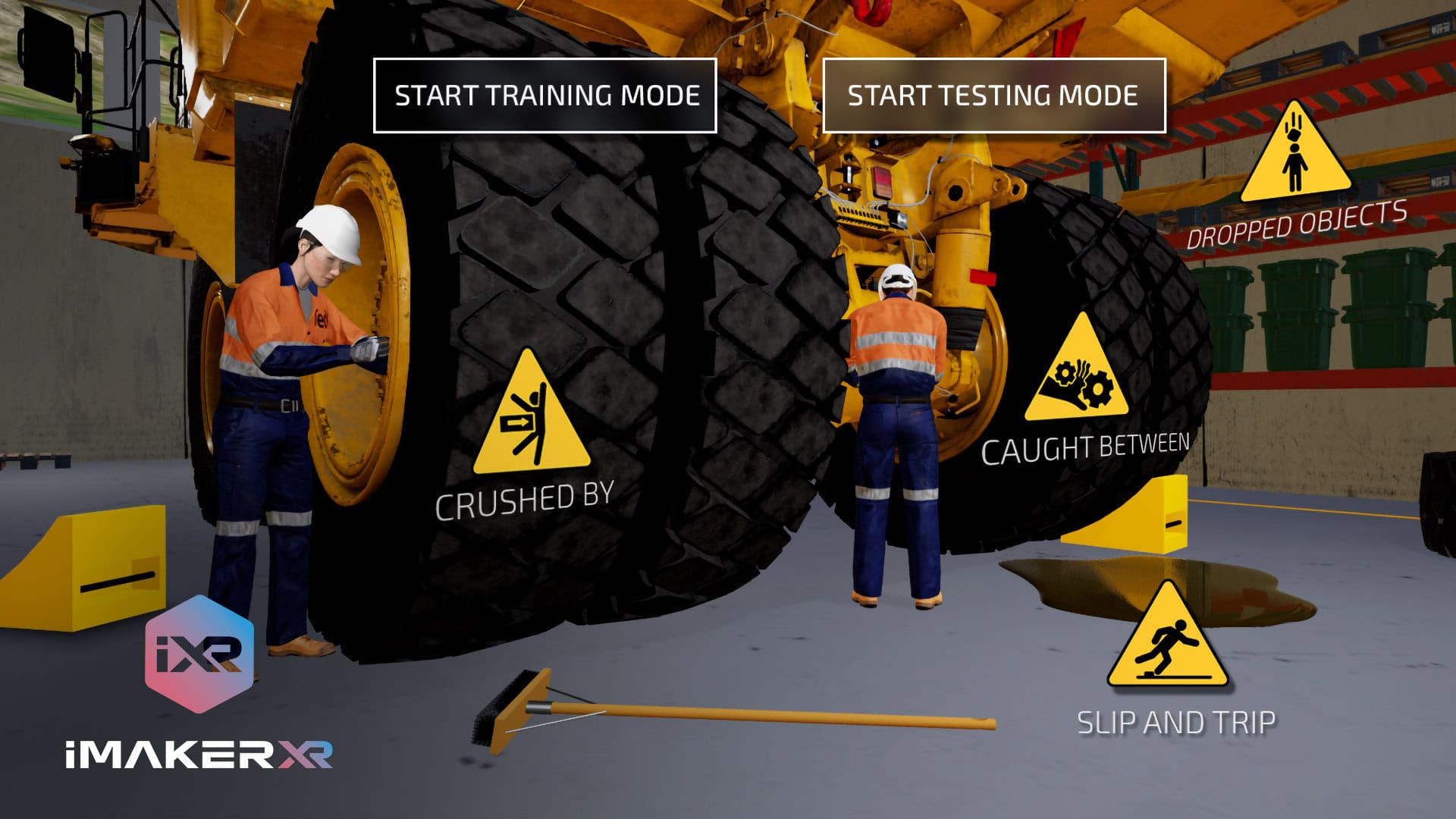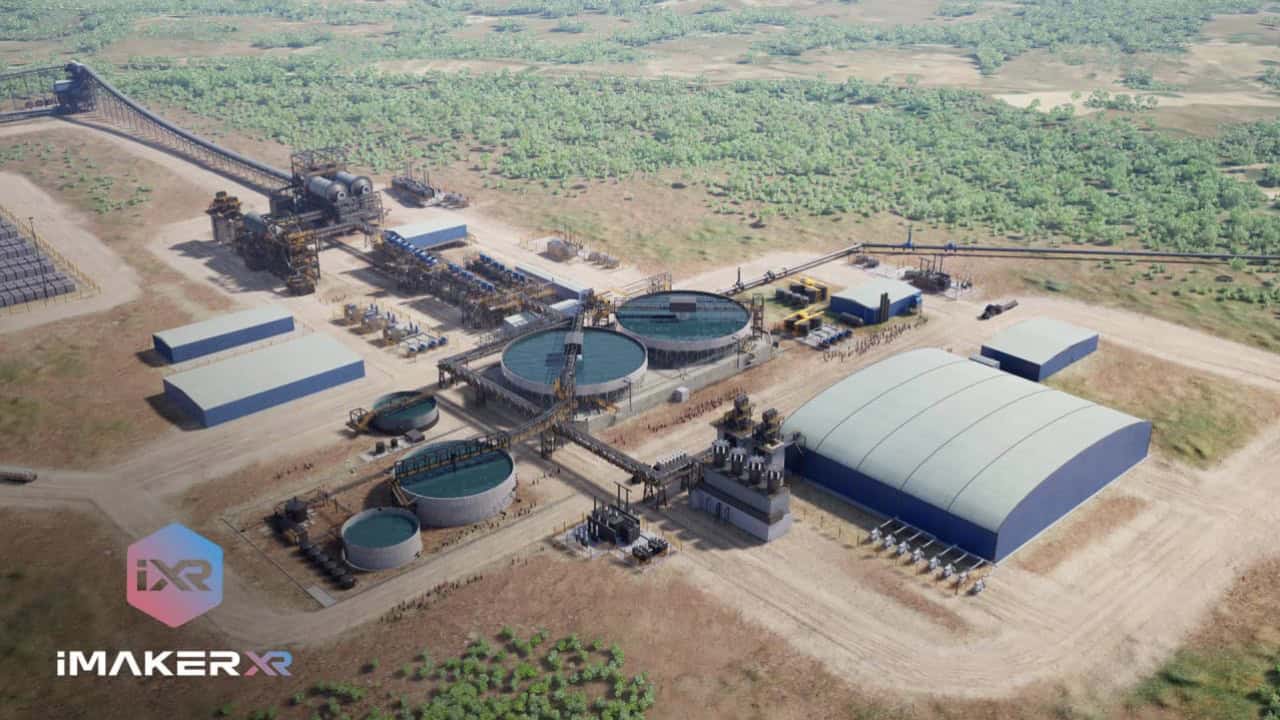

By iMakerXR Inc. | Leaders in Advanced 3D Visualization and VR for Mining
For the past two decades, iMakerXR Inc. has been at the forefront of innovation, servicing the global mining industry. With a remarkable track record of working with numerous Fortune 500 companies, major mining corporations worldwide, and contributing to over 250 diverse mining projects, our expertise lies in advanced 3D visualization and Virtual Reality (VR) solutions. We’ve witnessed firsthand the incredible evolution of VR and its profound impact on an industry traditionally rooted in tangible, often hazardous, operations. Our comprehensive VR solutions encompass highly realistic training and safety simulations to mitigate risks, sophisticated 3D visualization for precise mine planning and design, advanced operational simulations and digital twins for efficiency, immersive onboarding for rapid familiarization, and robust platforms for remote collaboration and communication, ultimately enhancing safety, optimizing processes, and fostering unparalleled connectivity across the entire mining lifecycle.
Virtual Reality has truly come on leaps and bounds over the last decade, transitioning from a niche technology to a powerful tool with demonstrable real-world applications across countless industries. While it may have encountered some initial speed bumps, such as a lack of marketplace awareness and prohibitive costs, the VR revenue is now projected to hit an astounding $252 billion by 2028. This rapid growth underscores its increasing accessibility and recognized value, signaling a broad acceptance across sectors.
For the mining industry, a sector defined by complex challenges, remote operations, and critical safety considerations, VR brings a host of practical benefits that are rapidly aiding and enhancing several aspects of its operations. From revolutionizing safety and strategic planning to meticulously training an entire team of operators, VR has the undeniable potential to fundamentally transform the mining landscape. It’s not merely an incremental improvement; it’s a paradigm shift in how mining companies operate, plan, and protect their most valuable asset: their people.
In this comprehensive exploration, we’ll delve into the multifaceted ways Virtual Reality is not just being used, but actively transforming the mining industry, offering unparalleled advantages in efficiency, safety, and innovation. We will explore each core application in detail, provide real-world examples, discuss the underlying technological advancements, and look towards the exciting future where VR becomes an indispensable component of the “intelligent mine.”
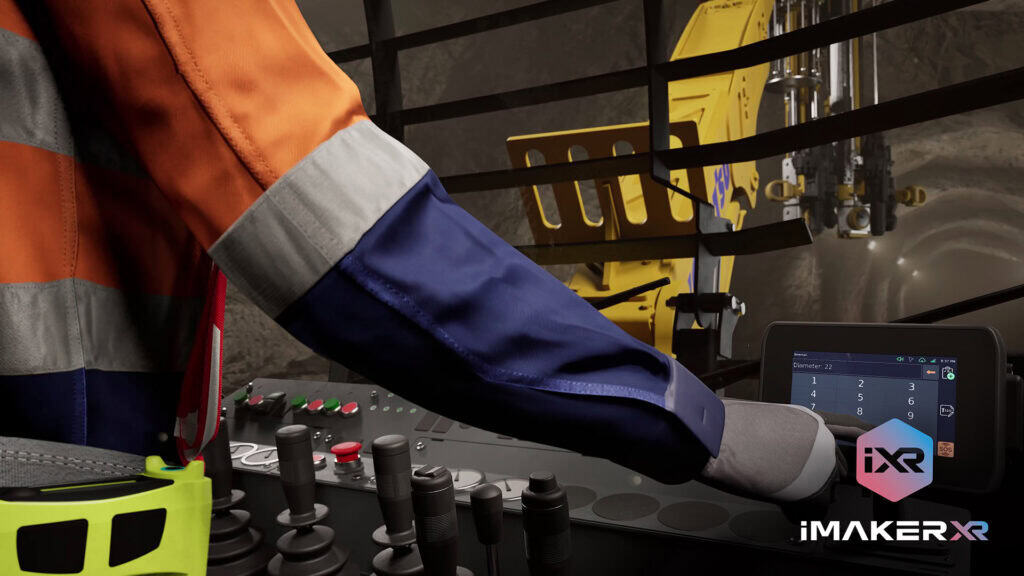
Training in the mining industry has historically been a significant challenge. The inherent dangers, the complexity of equipment, and the vast, often remote, environments make traditional hands-on training risky, expensive, and often limited in scope. Miners often learn on the job, which, while practical, carries inherent risks and can be inefficient. However, the implementation of Virtual Reality has provided a monumental boost, creating a new paradigm for workforce development. Not only does VR allow for more engaging, efficient, and standardized training programs, but it intrinsically makes the whole process safer.
Through Virtual Reality, staff can immerse themselves in incredibly realistic simulations that meticulously prepare them for real-world mining environments. This allows personnel to explore life-like mining scenarios without incurring any of the inherent safety risks. The level of detail in these simulations can be astonishing, replicating everything from the specific controls of a heavy-duty haul truck to the subtle geological nuances of a rock face.
Consider the scenario of training new staff on how to operate heavy machinery within a deep underground mine. Instead of immediately placing them in a high-stakes environment with expensive equipment and potential hazards, they first undergo intensive VR training. This is hands-on training without the real-world risks. Trainees apply their VR headset, and the simulation places them in a virtual mining site where they can operate the equipment as if they were physically there. This profound immersion allows the user to gain a deep understanding of the machinery, comprehend their complex surroundings, and internalize crucial safety protocols long before stepping foot in a physical mine. VR in mining is revolutionizing the approach to safety training, offering a game-changing solution to one of the industry’s most critical concerns.
This immersive technology provides a safe yet highly effective platform for training miners in various safety protocols and emergency response procedures. Trainees can experience hazardous situations—such as navigating through underground tunnels, handling explosive materials, responding to equipment malfunctions, or even dealing with potential cave-ins—without any actual risks.
For example, in the event that a fire breaks out underground, VR safety training programs give new staff a risk-free environment to navigate complex emergency procedures, practicing escape routes, operating emergency equipment, and refining communication protocols. The system can track their movements, decisions, and reaction times, providing invaluable feedback for improvement. This allows for repeated practice of critical, high-stress scenarios until the correct response becomes second nature.
Simulated Training Solutions (STS), a pioneering South African company, demonstrated this foresight by creating the first virtual reality blast wall in mining in 2016. Installed in Zambia at the Mopani Copper Mines, and subsequently in South Africa, these VR blast walls allow trainees to practice their skills in a controlled, virtual environment. Users can interact with a projected rock face, marking measured blast holes with an electronic spray can, and then practice detonating explosives in the correct sequence, observing the realistic rock reactions and fractures. Any mistakes are immediately highlighted, providing crucial learning moments without real-world consequences. This is a dramatic leap from traditional blackboard exercises and videos, providing remarkably effective job training that translates directly into safer, more prepared blasters and, ultimately, significant savings for mine operators by avoiding costly misfires and associated delays.
VR facilitates hands-on training, allowing miners to develop essential skills and experience in a controlled setting. This leads to better preparedness and reduces the likelihood of workplace accidents. Beyond basic operations, VR can be used to hone specific, intricate skills, such as precision drilling, intricate welding, or complex electrical repairs. The simulations can be tailored to various skill levels, from novice to expert, offering progressive challenges.
One of the key advantages of VR training is the ability to collect detailed performance metrics. Every action a trainee takes within the simulation can be recorded and analyzed. This data provides objective insights into their understanding, decision-making capabilities, and proficiency. Trainers can identify areas where individuals struggle, providing targeted feedback and additional practice. This data-driven approach ensures that training is effective and leads to measurable improvements in competency and confidence.
While there may be initial setup costs for VR hardware and software development, VR training significantly reduces the need for physical resources, travel expenses, and equipment wear and tear, making it a highly cost-effective solution in the long run. Consider the expense of taking a multi-million-dollar piece of mining equipment offline for training purposes, or the logistical nightmare and cost of transporting dozens of trainees to a remote mine site for a few days of hands-on experience. VR eliminates these needs.
Moreover, the reduction in accidents and incidents directly translates into substantial cost savings. Fewer injuries mean lower medical expenses, reduced workers’ compensation claims, and less downtime. A more skilled and safer workforce also leads to increased productivity and efficiency, further contributing to the return on investment. According to a report by PwC, VR training can be four times faster than classroom training and lead to 275% more confidence in applying skills, ultimately delivering a higher ROI.
VR training programs can simulate various emergency scenarios, such as fires, mine collapses, gas leaks, or equipment failures, enabling miners to practice evacuation procedures, first aid, and critical communication protocols. The simulations can vary in complexity and severity, exposing trainees to a wide range of potential crises. The ability to repeatedly practice these high-stakes situations in a stress-controlled environment vastly improves reaction times, reduces panic, and instills a systematic approach to crisis management. This ensures that when a real emergency strikes, miners are not only physically prepared but also mentally conditioned to respond effectively.
iMakerXR Inc. specializes in developing highly realistic and customizable VR training simulations that address the specific needs and risks of your mining operations. From equipment operation to complex emergency response, our solutions ensure your team is exceptionally prepared.
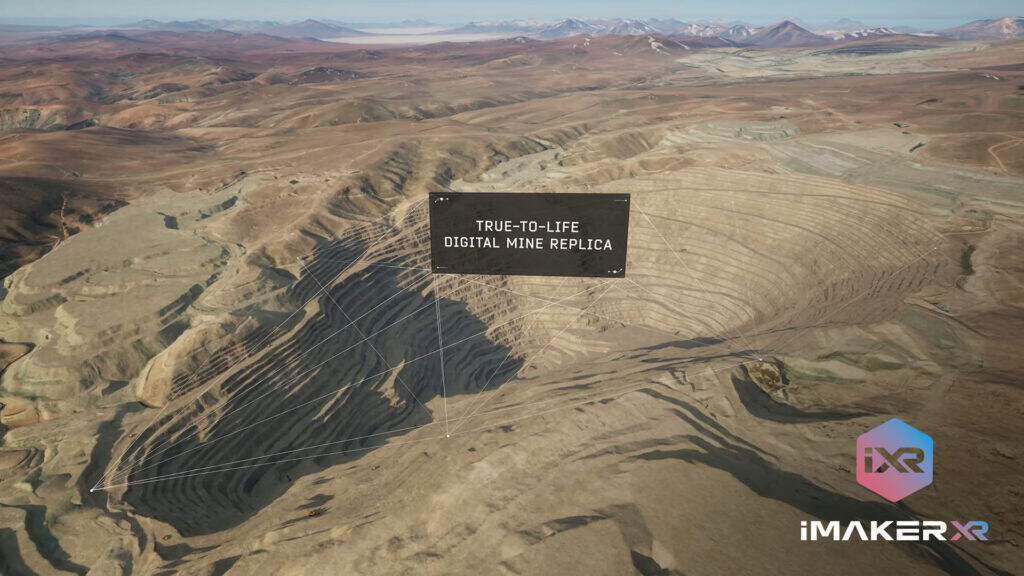
Traditional planning methods in the mining industry often grapple with an array of complex challenges, including the inherent remoteness of mine sites, the intricate designs required for infrastructure, and the immense logistical hurdle of coordinating global teams. The primary challenge lies in the sheer complexity of mine infrastructure, frequently located in remote and often inaccessible sites. Coordinating various specialized teams, including surveyors, designers, engineers, and geologists, can quickly become an organizational and logistical nightmare – especially if they’re distributed across different continents, which is often the case for large mining corporations.
Virtual Reality provides an elegant and powerful solution, helping navigate the complexities that come with comprehensive mine planning. Through VR, companies can create immersive experiences that effectively bypass the limitations of physical presence, allowing teams to collaborate seamlessly across from wherever they’re based. Essentially, it becomes a crucial bridge between distant 3D models and real-world planning, eliminating the reliance on conventional 2D drawings that often require a high degree of visualization skill to interpret.
The ability to design and meticulously visualize 3D models of mining sites, individual pieces of equipment, tools, and machinery provides huge benefits for engineers, geologists, and project managers alike. This immersive visualization allows for a safer environment and a richer learning experience. Using VR, teams can “walk through” a proposed mine design, explore geological formations, and assess the placement of infrastructure with unprecedented clarity. This helps engineers, geologists, and project managers visualize and understand the layout and geology of a mine, leading to safer and more efficient planning.
For instance, geologists can virtually explore a newly discovered ore body, understand its structure, and identify optimal drilling locations. Engineers can test different mine layouts, simulate ventilation systems, and identify potential bottlenecks or safety hazards before any physical construction begins. This level of predictive analysis is invaluable in preventing costly mistakes down the line.
VR facilitates remote collaboration among teams located in different parts of the world. By creating shared immersive experiences, teams can seamlessly work together on mine planning and design, regardless of their physical location. This is particularly crucial for multinational mining companies with geographically dispersed talent.
Design reviews, for example, can take place remotely, saving significantly on fly-in, fly-out (FIFO) costs and the logistics of face-to-face meetings. Users can “walk around” a virtual site, pointing out specific elements for the rest of the group to see, making it much easier for designers to identify hardware overlaps, such as clashes between piping and steel, or noting that cable trays are not being laid in the most efficient way. This real-time, interactive collaboration ensures that all stakeholders, from project managers to on-site supervisors, have a shared understanding of the plan and can contribute their expertise effectively.
Example: A mining company planning a new underground expansion might have geologists in Australia, structural engineers in Canada, and operational managers in Chile. Through a shared VR environment, all these experts can simultaneously explore the proposed tunnel layouts, assess ground stability from geological models, and discuss operational logistics, all within the same virtual space, pointing, annotating, and making decisions in real-time. This dynamic interaction far surpasses the limitations of video conferencing or static blueprints.
VR allows for the virtual exploration and analysis of potential mining sites, helping teams make informed decisions about site viability and resource allocation before any physical work begins. By overlaying real-time geological data, environmental impact assessments, and financial projections onto the 3D VR model, decision-makers can gain a holistic view of the project.
Identifying and evaluating issues becomes far more efficient. Clients embracing this technology have found that the ability to zoom in on equipment, access points, and walkways is invaluable for Hazard and Operability Studies (HAZOPs), as well as constructability and maintenance reviews. The main outcomes for clients embracing this technology are significant time and cost savings. This is a direct result of reduced FIFO requirements, the ease of remote collaboration with other service teams, and the critical ability to identify problems virtually during the planning and design phase, rather than incurring costly delays and rework on-site during construction or operations. This predictive capability is a game-changer.
VR reduces the costs associated with transporting equipment, traveling to remote mining sites, and rectifying errors that would otherwise only be discovered during physical construction. By catching design flaws or operational inefficiencies in the virtual realm, companies can avoid expensive redesigns, material waste, and construction delays. The ability to simulate various scenarios and optimize layouts before breaking ground translates into tangible financial savings and accelerated project timelines.
iMakerXR Inc.’s advanced 3D visualization and VR design services bring your mining projects to life, ensuring precision and efficiency from concept to completion. Our solutions empower your teams to plan with unparalleled accuracy, minimizing risks and maximizing returns.
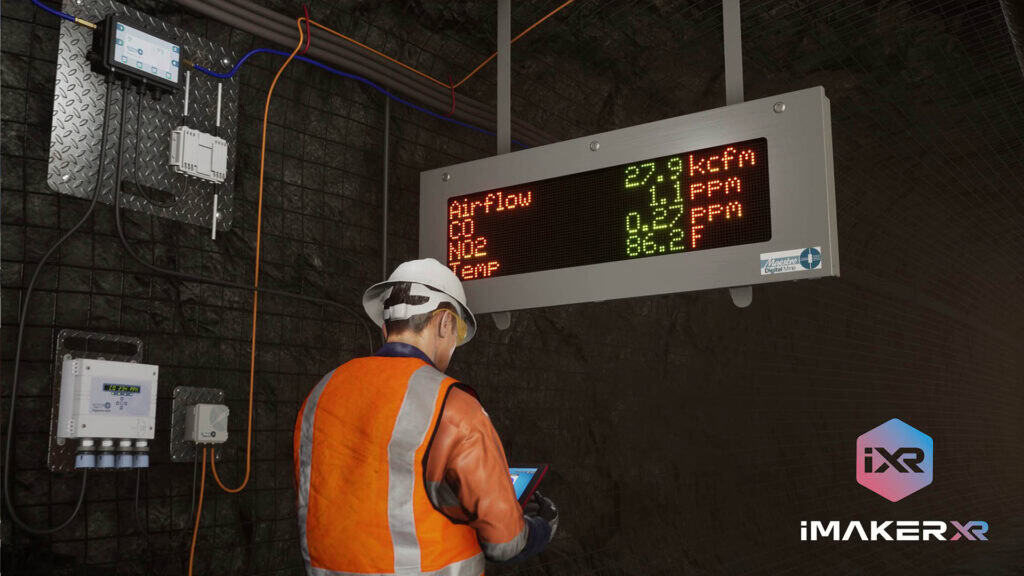
As we briefly touched upon, the ability to simulate real-world mining scenarios for safety and training brings immense benefits. However, Virtual Reality’s application in simulation extends far beyond just training. It can also be used to create incredibly realistic virtual environments where experienced operators can interact with mining equipment and experience various operational scenarios, testing hypotheses and optimizing workflows without real-world disruption. This capability moves VR from a training tool to a powerful operational planning and optimization platform.
VR creates realistic virtual environments where operators can interact with mining equipment and experience various operational scenarios. This isn’t just about training how to use a single piece of machinery; it’s about simulating entire operational processes. For example, a VR simulation can model the entire extraction process, from drilling and blasting to hauling and processing. Operators can test different equipment configurations, optimize material flow, and identify bottlenecks in the production chain. This allows for fine-tuning operational procedures in a risk-free, consequence-free environment.
VR simulators can be used to virtually explore and analyze potential mining sites in unprecedented detail. These simulations can meticulously replicate the geological features, hydrological conditions, and topographical nuances of different locations, allowing teams to make highly informed decisions about the viability of a site before even stepping foot in the actual location. This not only saves significant time and resources but also enables more thorough and accurate assessments, contributing to smarter, data-driven decision-making in the critical exploration and pre-feasibility phases of mining projects.
Geologists can navigate through virtual drill core samples, visualize seismic data in 3D, and even simulate the impact of different mining methods on the surrounding environment. This level of detailed pre-assessment significantly reduces the geological and economic risks associated with new projects.
The most advanced development in VR for mining is digital twins, which are exact virtual replicas of mines that update in real-time. These sophisticated virtual replicas of real-world mines offer real-time monitoring and control over both equipment and personnel. By continuously collecting data from sensors in the physical mine (IoT sensors, telematics, etc.) and feeding it into the VR digital twin, operators can visualize current conditions, predict potential issues, and even remotely control certain machinery. This level of real-time insight fundamentally transforms operational efficiency and responsiveness.
Imagine a mine control room where operators, wearing VR headsets, are immersed in a living, breathing digital twin of their entire mine. They can see the precise location of every vehicle, the real-time output of processing plants, the air quality in different tunnels, and the structural integrity of critical infrastructure. If a conveyor belt malfunctions, the digital twin immediately highlights the issue, allowing operators to diagnose the problem remotely and guide on-site personnel in real-time. This proactive approach minimizes downtime, optimizes resource allocation, and enhances overall safety.
Furthermore, VR is instrumental in simulating complex operational sequences, such as blast planning. As highlighted, controlling explosives in mines is extremely important, and highly dangerous if not handled correctly. If explosives are not placed in the correct locations with accurate measurements, the rocks may fracture in unexpected and hazardous ways, both underground and above the surface, leading to safety risks, operational inefficiencies, and increased costs.
Virtual reality provides a safe and effective way to practice the intricate art of placing explosives without any of the inherent dangers by using a simulated VR mine. This level of precise simulation allows for the optimization of blasting patterns to achieve desired rock fragmentation, improving efficiency, reducing waste, and ensuring the safety of personnel and infrastructure. Users can experiment with different charge densities, delay sequences, and hole patterns, observing the simulated outcomes and refining their techniques. This iterative practice is impossible in the real world due to cost and safety constraints.
iMakerXR Inc. develops advanced VR simulation solutions that allow your team to test, optimize, and perfect operational workflows in a safe, controlled virtual environment. From complex process simulations to the creation of dynamic digital twins, we empower you to maximize efficiency and minimize risk.
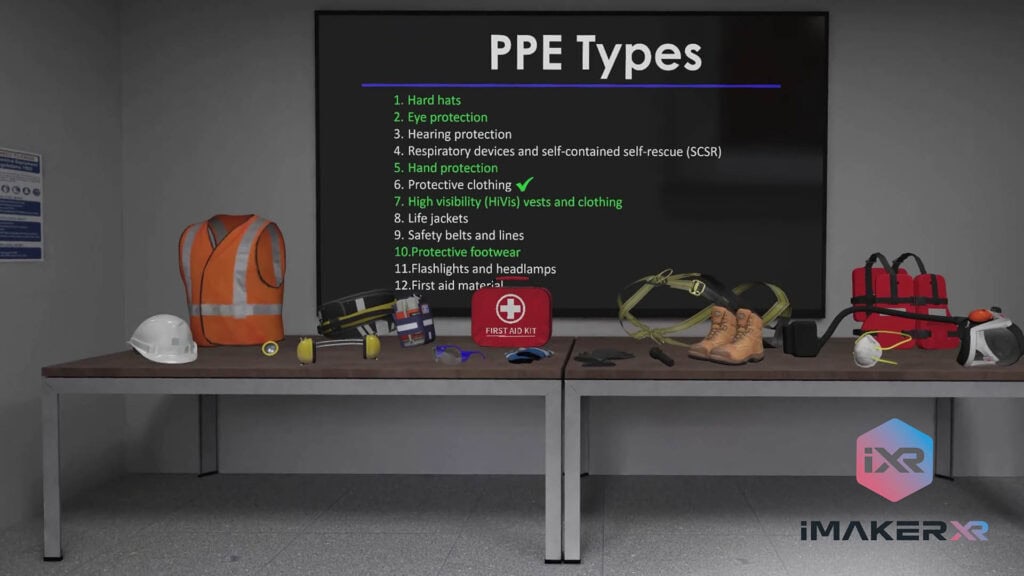
The initial stages of an employee’s journey within a mining company – onboarding and familiarization – are crucial for retention, safety, and productivity. Traditional onboarding often involves extensive paperwork, classroom lectures, and potentially overwhelming initial site visits. Virtual Reality significantly enhances this process, moving beyond traditional presentations and static maps to provide truly immersive experiences that accelerate learning and build confidence.
Welcoming new staff to your business with a virtual tour of your mining facilities not only allows them to explore the site and get intimately familiar with the equipment, but it critically allows them to make mistakes without worry. Before ever stepping foot on a potentially hazardous mine site, new hires can navigate virtual tunnels, explore processing plants, and identify key safety stations. This significantly reduces anxiety and allows them to absorb critical information about the mine layout and operational procedures in a low-stress environment.
These virtual tours can be customized to specific roles. A new geologist might focus on geological features and sampling points, while a new maintenance technician might concentrate on equipment layouts and emergency shut-off valves. This tailored approach ensures relevance and efficiency in the familiarization process.
VR can simulate various scenarios, gently introducing new employees to the intricate details of their roles, such as troubleshooting equipment malfunctions or practicing emergency response procedures. This goes far beyond a static tour. Immersive onboarding experiences can put new hires in simulated situations that test their understanding of protocols and their ability to react under pressure.
For instance, a new technician can virtually troubleshoot equipment malfunctions, practice lockout/tagout procedures, or identify faulty components. A new safety officer can practice responding to a simulated spill or a small fire, identifying the correct emergency procedures and communication channels. This significantly reduces the learning curve and builds confidence before they encounter these situations in the real world. The ability to make mistakes and learn from them in a consequence-free environment is invaluable.
By familiarizing themselves with the layout of a site and the equipment used, staff are better prepared to carry out their tasks, leading to more efficient processes. This accelerated familiarization means new hires become productive much faster. They arrive on site already possessing a strong mental map of the facility, an understanding of key equipment, and a foundational grasp of safety protocols.
In a similar vein to its use in training, Virtual Reality allows all staff – new hires and experienced personnel alike – to quickly familiarize themselves with tools, equipment, and complex mining sites before stepping foot physically on location. This enables staff to better understand their surroundings and the specific tools they’ll be using, thereby accelerating the familiarization process and making real-world operations more efficient from day one. This leads to higher productivity, reduced errors, and a more confident workforce, directly impacting the bottom line and improving overall operational flow.
iMakerXR Inc. offers customized VR onboarding and familiarization programs designed to integrate new hires efficiently and safely into your mining operations, drastically reducing ramp-up time and enhancing their preparedness from day one.
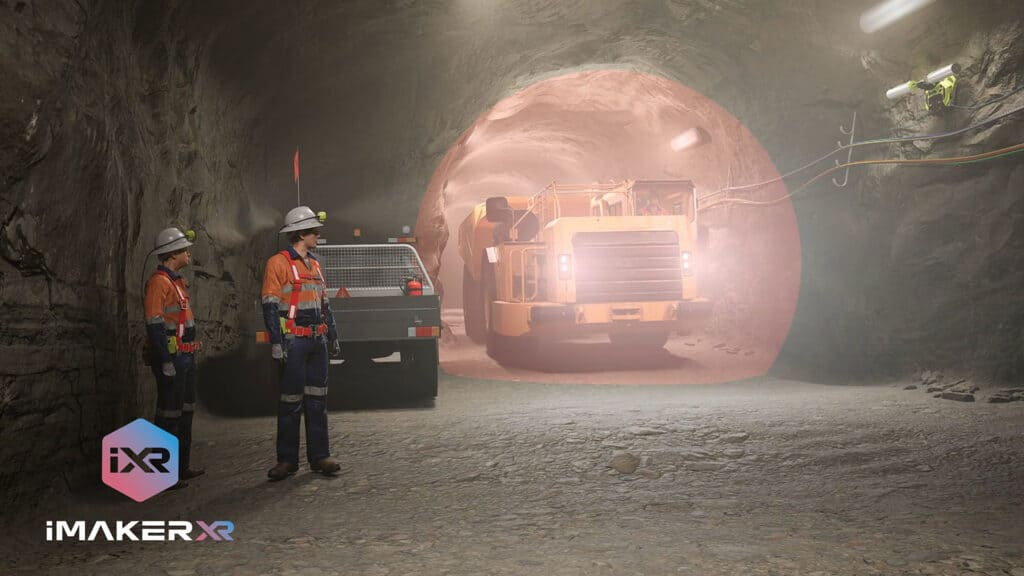
Effective communication and seamless collaboration are the bedrock of successful large-scale operations, especially in complex industries like mining where teams are often geographically dispersed and dealing with dynamic, intricate environments. Traditional communication methods, such as emails, phone calls, and even video conferences, often lack the spatial awareness and shared context crucial for complex mining projects. VR technology is rapidly being adopted in the mining industry to significantly improve these vital aspects, fostering a sense of co-presence and shared understanding that was previously impossible.
VR can be used to create immersive shared environments that allow team members to work together effectively in virtual spaces, regardless of their physical location. This means engineers in Calgary, geologists in Perth, and project managers in Santiago can all meet within a virtual 3D model of a new mine site, inspecting details, discussing challenges, and making decisions as if they were all standing together on site. This fosters a sense of presence and shared understanding that traditional video conferences or 2D drawings simply cannot replicate.
Participants in a VR collaborative session can use avatars to represent themselves, enabling non-verbal communication cues like pointing or gesturing. They can interact with the virtual environment, pulling up data overlays, highlighting specific areas of interest, and even manipulating virtual objects. This level of interaction mimics real-world collaboration, making discussions more productive and decisions more informed.
VR directly improves the efficiency and productivity of tasks by allowing teams to communicate and collaborate more effectively. When everyone is literally “on the same page” within a 3D virtual environment, misinterpretations are drastically reduced. Complex problems that would be difficult to explain over a phone call can be visually demonstrated and collaboratively solved in VR.
For example, during a project review, a structural engineer can directly point to a specific beam in a virtual model of a new processing plant, while a maintenance manager explains a potential access issue, and a safety officer highlights a compliance concern. All stakeholders have immediate visual context, leading to faster identification of issues and more effective brainstorming for solutions. It enables collaborative training sessions, where employees, whether they’re in the same room or across continents, can undergo synchronized training, ensuring everyone is on the same page regarding specific mining processes, safety protocols, or equipment operations.
Furthermore, VR can even be used to help staff become acquainted with each other through immersive team-building experiences and exercises, fostering a stronger sense of camaraderie and cohesion among a geographically distributed workforce. In an industry where teams might spend months apart, virtual team-building activities can help maintain morale and strengthen interpersonal connections, which are crucial for effective long-term collaboration. These could range from collaborative problem-solving games within a simulated mine environment to more informal social VR spaces.
iMakerXR Inc. offers collaborative VR platforms designed to enhance communication and streamline teamwork across your global mining projects, fostering a truly connected and efficient workforce.
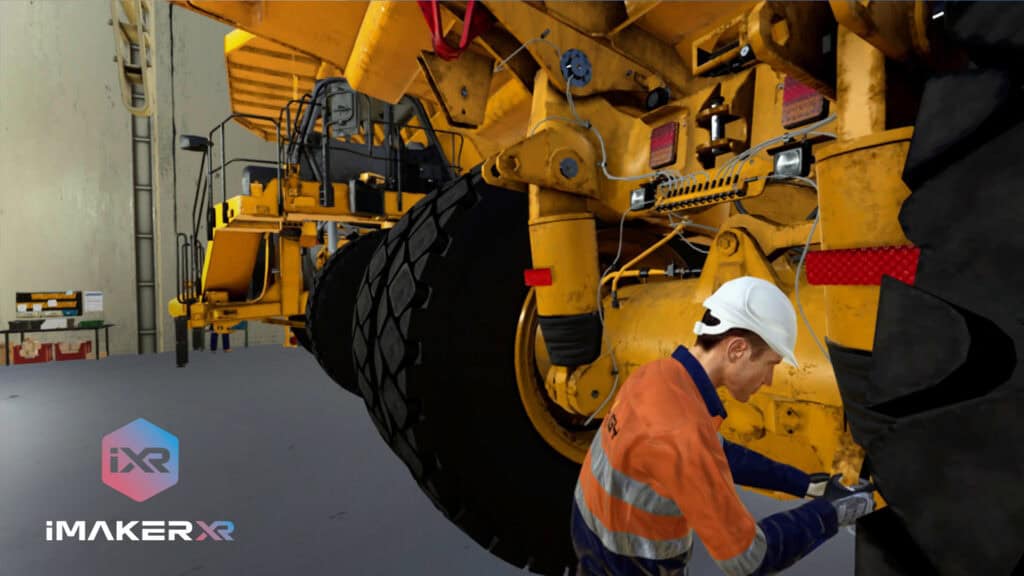
The remote nature of many mining operations poses significant logistical and cost challenges for site inspections and maintenance. Sending expert personnel to distant locations can be time-consuming, expensive, and sometimes hazardous. Traditional methods often involve extensive travel, accommodation, and time away from other critical tasks. Virtual Reality, often in conjunction with Augmented Reality (AR), offers a powerful solution, enabling unprecedented access and efficiency in these crucial areas, transforming how mining companies manage their assets and infrastructure across vast distances.
VR allows experts to virtually explore and assess mine sites without the need for physical presence. This means a senior geologist can conduct a detailed virtual inspection of a new exploration site, or a mechanical engineer can meticulously review the layout of a processing plant, all from a comfortable, safe office. This capability dramatically streamlines decision-making processes, accelerates problem identification, and significantly reduces travel costs and time associated with physical site visits.
For example, before committing to an expensive and time-consuming physical visit, a project manager can conduct a virtual “walk-through” of a proposed mine expansion, identifying potential logistical hurdles, assessing terrain for equipment deployment, or reviewing compliance with environmental regulations. This pre-visualization allows for more informed planning and reduces the need for multiple on-site visits.
Beyond just inspection, VR, often combined with Augmented Reality (AR), is poised to revolutionize maintenance and repairs. Imagine a scenario where a critical piece of equipment breaks down in a remote mine. Instead of waiting for an expert to travel to the site, a local technician can wear an AR headset, such as smart glasses. Through this headset, the expert, located thousands of miles away, can remotely guide the technician, overlaying virtual instructions, diagrams, and even live annotations onto the technician’s real-world view of the machinery.
This remote assistance capability allows for immediate expert support, significantly reducing downtime and potentially avoiding costly transportation of specialized personnel or equipment. It empowers on-site personnel with expert knowledge, regardless of their experience level, leading to faster repairs and fewer errors. In the future, VR systems are expected to allow users to zoom in and view embedded data on items – for example, the make, model number, capacity, and maintenance schedule of a specific valve or pump could be viewed virtually by simply looking at it through a VR or AR interface. This would have a profound impact on the efficiency of maintenance and procurement tasks, being directly tied to the 3D model of the mine.
Wearable AR devices, such as smart glasses, can provide real-time data and enhance decision-making for operators and maintenance crews. This can include live sensor readings (temperature, pressure, vibration), historical maintenance records, and step-by-step repair instructions, all displayed contextually within their field of view. This immediate access to critical information allows for more accurate diagnostics and more efficient execution of tasks.
For instance, an operator inspecting a large conveyor system could see real-time data on belt tension or motor temperature overlaid on the physical equipment, allowing them to identify potential issues before they escalate into major failures. This proactive maintenance approach extends equipment lifespan and prevents costly unscheduled downtime.
iMakerXR Inc. offers innovative solutions for remote site inspections and maintenance, bringing expert eyes to your operations, no matter the distance, ensuring optimal performance and minimal disruption.
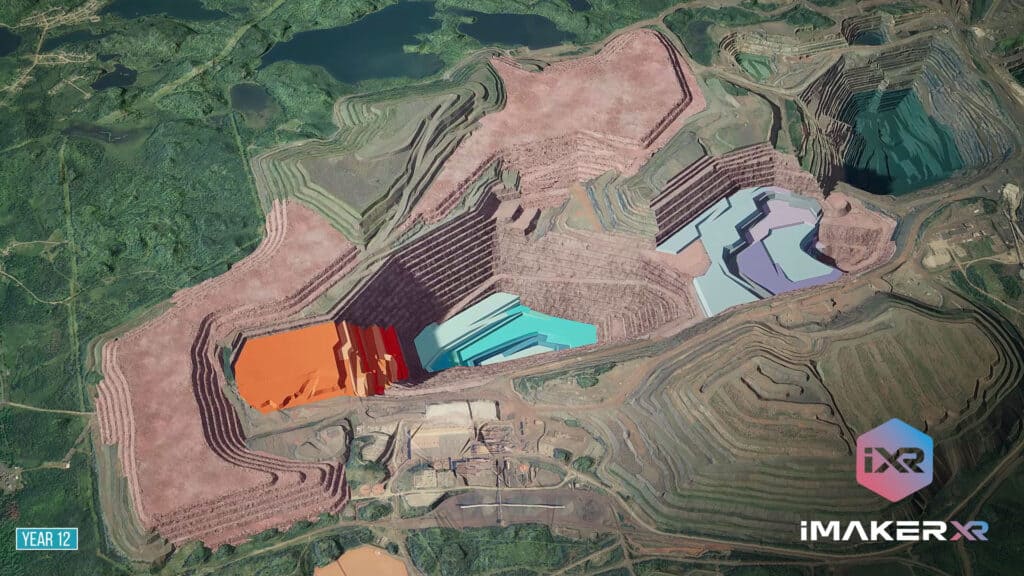
Beyond the direct operational and safety benefits, new technologies, including VR, are also offering a way to address some of the broader environmental and social issues that the mining industry faces. The sector is under increasing scrutiny for its environmental footprint and its impact on local communities. VR can play a surprisingly significant role in fostering more sustainable and ethical mining practices.
The ability to simulate various scenarios, conduct remote inspections, and facilitate virtual collaboration drastically reduces the need for physical travel. This directly translates into a lower carbon footprint for mining companies. Fewer flights for project managers, engineers, and trainers mean reduced emissions. The optimization of mine planning through VR can also lead to more efficient resource extraction, minimizing waste and the overall energy consumption of operations. For example, precise blast planning in VR can reduce the need for multiple blasting attempts, leading to less explosive material use and a more efficient fragmentation of rock.
VR can be used to visualize and simulate the environmental impact of mining operations before they begin. This includes modeling water runoff, dust dispersion, land disturbance, and rehabilitation plans. By allowing stakeholders to virtually experience the proposed environmental changes, companies can gain valuable feedback and adapt their plans to minimize negative impacts. This transparency can improve community relations and ensure more responsible land stewardship. For instance, a VR model can show how a proposed tailings dam might impact local waterways over time, allowing for adjustments to the design to protect sensitive ecosystems.
Historically, the mining industry has faced scrutiny regarding labor practices, particularly in regions where child labor or unsafe working conditions have been issues. By increasing efficiency through technology, and by providing a safer, more skilled workforce through VR training, there’s a pathway to reducing reliance on dangerous and unethical labor practices. As automation and advanced technologies like VR become more prevalent, the demand shifts towards a highly skilled, technologically proficient workforce. This change can help uplift labor standards globally by creating safer, more specialized roles and reducing the reliance on manual, high-risk labor.
VR training can empower workers with valuable, transferable skills, improving their employability and overall quality of life. This investment in human capital contributes to a more ethical industry and strengthens a company’s social license to operate within communities.
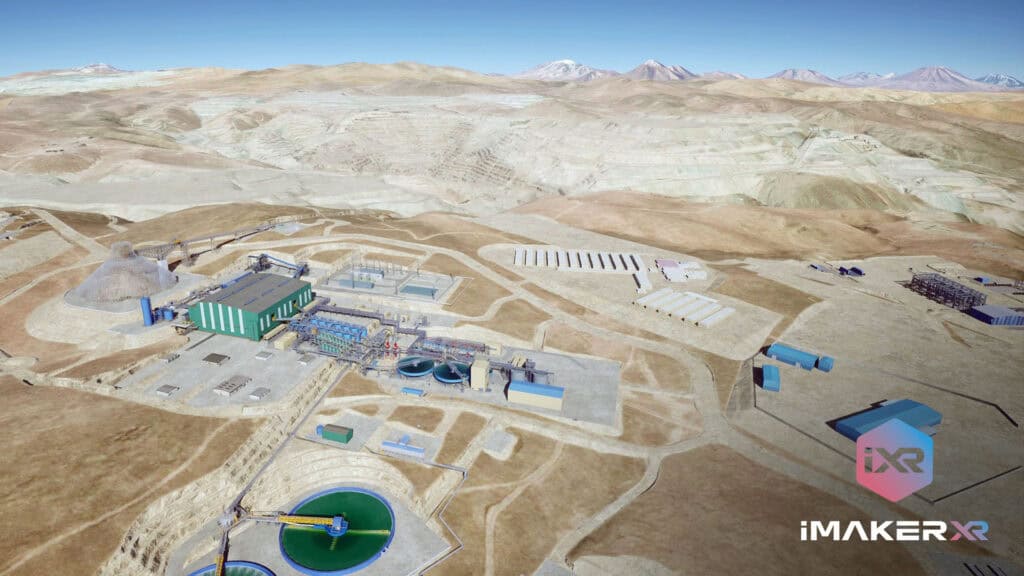
The ultimate goal for many forward-thinking companies is the creation of what is being referred to as the “intelligent mine.” This vision involves seamlessly integrating advanced technologies to create a fully optimized, safer, and more sustainable mining operation. VR is a cornerstone of this future, serving as the intuitive interface through which complex data is understood and controlled.
Solutions like “Mine Life VR,” as developed by companies such as LlamaZoo, provide a full spectrum of data sets and design iterations for comprehensive mine planning. This allows for optimized resource management and allocation, providing mining companies with unparalleled tools to optimize their offerings. The intelligent mine will leverage vast amounts of data from IoT sensors, autonomous vehicles, geological surveys, and environmental monitoring systems. VR will serve as the immersive dashboard, allowing operators and managers to visualize this complex data in an understandable and actionable 3D context.
For example, a VR interface could overlay real-time production metrics onto a virtual model of the processing plant, highlight areas of inefficiency, or display predicted maintenance needs for specific equipment. This real-time, data-driven insight allows for agile decision-making and continuous optimization of the entire mining lifecycle.
Crucially, the intelligent mine, powered by VR, also allows for enhanced transparency and communication with investors and community relations. Giving stakeholders a chance to view a virtual tour of the mine site in real-time 3D, a level of insight that was previously unattainable, fosters trust and understanding.
Investors can be presented with a virtual walkthrough of a proposed mine, complete with financial projections overlaid on the physical plan. Local communities can visualize the mine’s footprint, rehabilitation plans, and environmental safeguards, allowing for more constructive dialogue and addressing concerns proactively. This transparency is vital for securing and maintaining a social license to operate in an increasingly scrutinizing world.
The ongoing advancements in Virtual Reality are not only enhancing strategic planning but are also profoundly elevating safety and training standards across mining sites globally. Already, VR has greatly improved collaborative inspections, allowing teams to analyze every facet of a mining operation with unprecedented detail. From assessing structural integrity to meticulously inspecting equipment placements, having a digital preview drastically improves efficiency across all processes.
As VR technology continues to advance and user capabilities expand, it is poised to revolutionize virtually all aspects of the mining industry. It’s no longer just about envisioning a site; it’s about embedding real-time data, facilitating efficient and informed decision-making, and ultimately redefining the entire landscape of mining operations. There’s little doubt that the synergistic integration of artificial intelligence (AI) and machine learning (ML) will bring even more transformative capabilities to this type of design and operational work when harnessed within the VR environment. AI can analyze VR training performance data to personalize learning paths, or predict equipment failures based on patterns identified in a VR digital twin. Machine learning algorithms can optimize mine designs based on simulated geological data, or suggest the most efficient hauling routes in a virtual environment. The future of mining will be deeply intertwined with the immersive and intelligent capabilities that Virtual Reality brings to the table.
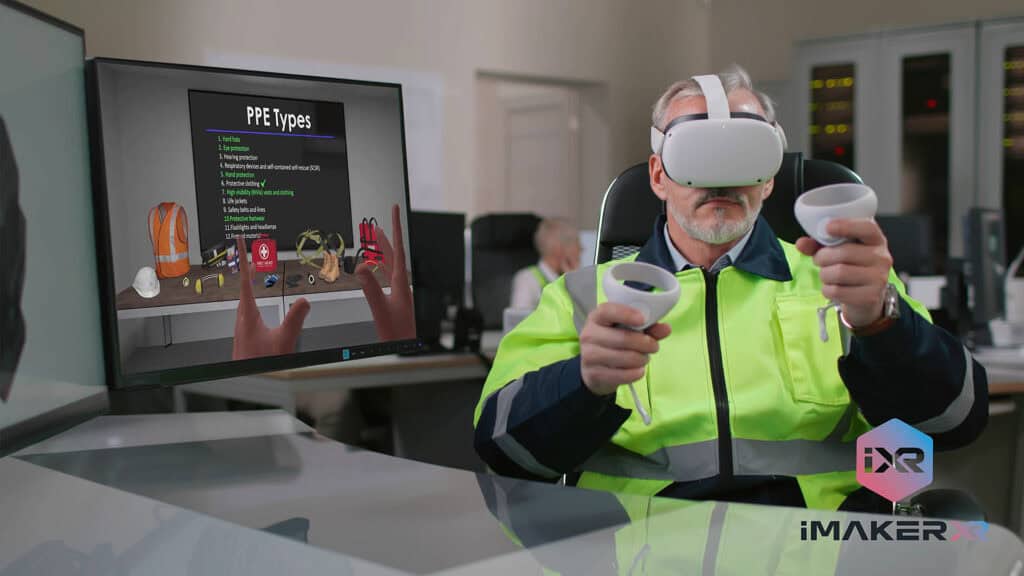
To truly appreciate the impact of VR, it’s important to understand the technological advancements that make these applications possible.
The evolution of VR headsets has been critical. Early headsets were expensive, cumbersome, and often caused motion sickness. Today, devices like the Oculus Quest (now Meta Quest), HTC Vive, and Varjo offer high-resolution displays, wide fields of view, and comfortable designs. Wireless capabilities have freed users from tethering, allowing for greater freedom of movement within virtual environments. Haptic feedback gloves and suits are also emerging, allowing for a more tactile and realistic interaction with virtual objects, which is crucial for hands-on training.
Sophisticated software engines, primarily Unity and Unreal Engine, are the backbone of VR simulations. These platforms allow developers to create highly detailed, realistic 3D environments, complete with accurate physics, lighting, and environmental effects. Specialized VR development kits and APIs enable seamless integration of real-world data, CAD models, and sensor information into the virtual world. Furthermore, cloud computing plays a vital role in enabling complex simulations and facilitating remote collaboration, allowing multiple users to access and interact within the same virtual environment from different geographic locations.
The true power of VR in mining comes from its ability to integrate with other crucial datasets and systems. This includes:
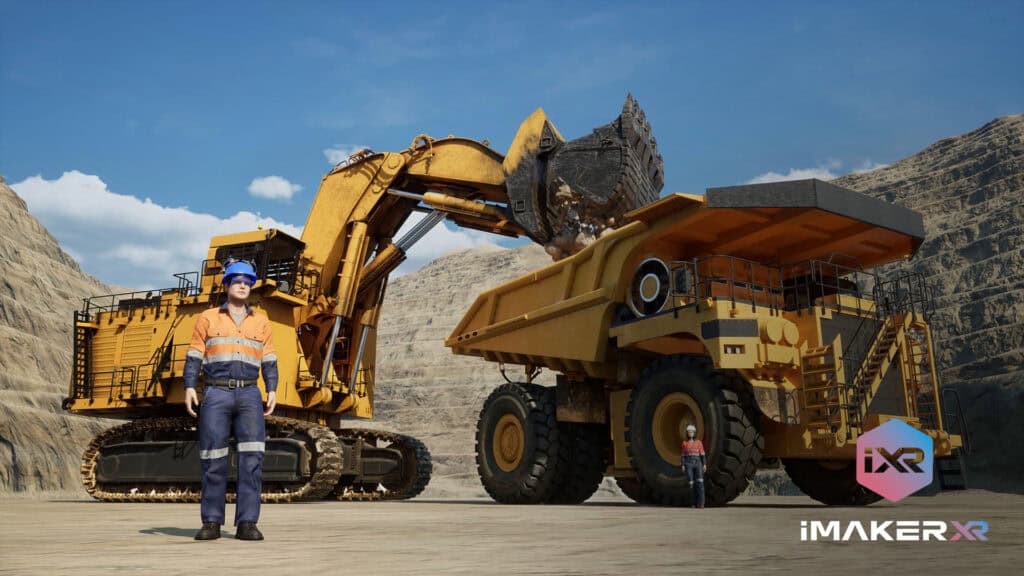
While the benefits of VR in mining are compelling, its widespread adoption isn’t without its challenges. Addressing these proactively is key to successful implementation.
Developing high-fidelity VR simulations and acquiring robust hardware can represent a significant upfront investment. This can be a barrier for smaller mining operations or those with limited capital for technological upgrades. However, as VR technology matures and becomes more accessible, these costs are decreasing, and the long-term ROI often justifies the initial outlay.
Creating sophisticated VR content requires specialized skills in 3D modeling, game development engines (Unity, Unreal), VR programming, and data integration. Mining companies may need to invest in training existing staff or hiring new VR development teams. Partnering with specialized VR service providers like iMakerXR Inc. can mitigate this challenge by providing access to experienced teams.
Integrating sensitive operational data, personnel information, and proprietary mine designs into VR systems raises concerns about data security and privacy. Robust cybersecurity measures, secure cloud infrastructure, and strict data governance policies are essential to protect this valuable information.
While VR technology has improved significantly, some users may still experience discomfort or motion sickness, especially during prolonged sessions. Ensuring comfortable hardware, optimizing simulation design to minimize adverse effects, and providing proper training on VR usage are important for user adoption. The generational shift in the workforce, with younger generations often more familiar and comfortable with digital technologies, will also play a role in increasing acceptance.
Integrating new VR systems with existing legacy IT infrastructure can be complex. Ensuring scalability for large-scale deployments across multiple mine sites and achieving seamless data flow between disparate systems are critical for maximizing the value of VR. Careful planning and phased implementation strategies can help overcome these integration challenges.
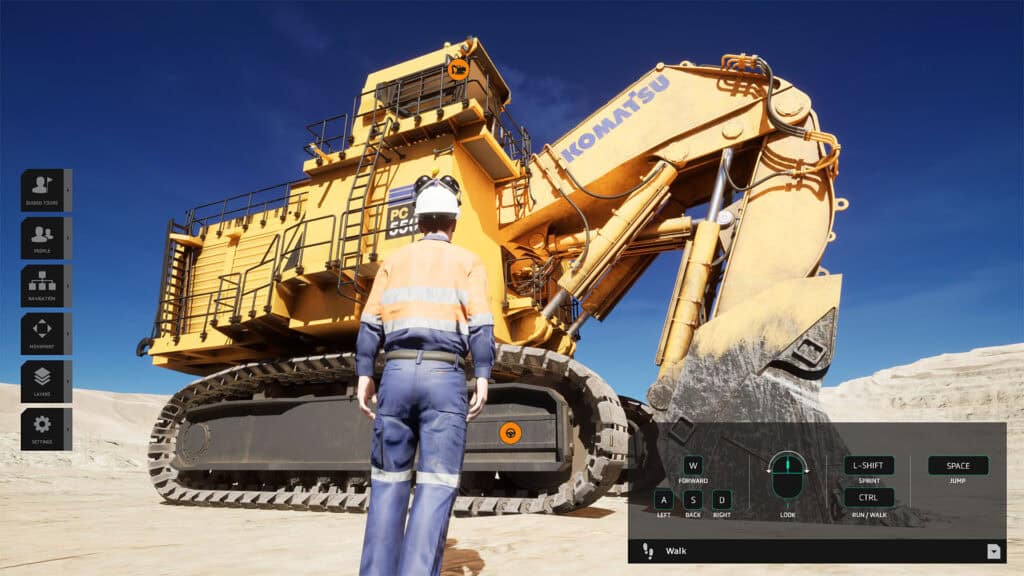
The mining industry has always been perceived as a high-risk profession. The dangers of going underground, the risk of cave-ins, and the inherent risks associated with using explosives on-site have made it one of the most hazardous jobs globally. However, the emergence of VR technology offers a powerful counter-narrative, promising a safer and more productive environment for the people who work in mining. Through the strategic and expanding use of virtual and augmented reality, a fundamentally safer work environment can be created by thoroughly training miners and providing an environment that is not only safer to work in but also significantly more productive and efficient.
VR is not merely a niche application; it’s a foundational technology that is reshaping the entire operational landscape of the mining industry. From ensuring the safety of every miner through immersive training to enabling remote, global collaboration on complex mine designs, and optimizing maintenance with real-time data, VR’s impact is broad and transformative. Its ability to create highly realistic, interactive, and data-rich virtual environments makes it an indispensable tool for addressing the core challenges of the sector: safety, efficiency, and sustainability.
As VR hardware becomes more affordable and powerful, and software more sophisticated and user-friendly, its integration into daily mining operations will only deepen. The convergence of VR with other cutting-edge technologies like AI, IoT, and advanced analytics will unlock even greater potential, leading to truly “intelligent mines” that are not only safer and more productive but also more environmentally responsible and socially conscious. The future of mining will be profoundly intertwined with the immersive and intelligent capabilities that Virtual Reality brings to the table, paving the way for a more efficient, ethical, and secure industry.
iMakerXR Inc. is proud to be at the forefront of this revolution, committed to providing advanced 3D visualization and VR solutions that empower the mining industry to embrace its high-tech future, driving unparalleled safety, efficiency, and innovation.

